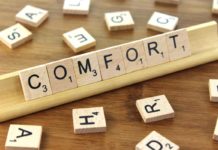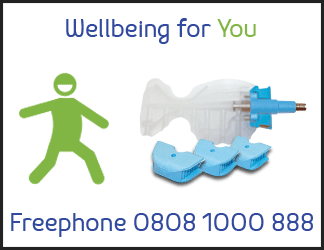
Dental Hygienist, Therapist and Practice Principal Lizzy Hudd describes how her dedicated approach to patient-centred care led her to find a painless system of delivering anaesthesia, which works for even the most anxious patients.
Patient comfort is any clinician’s priority and an empathetic, gentle approach goes some way to acclimatising patients when it comes to the nearly 50% of UK adults who fear the dentist.[1] This statistic matches the findings of a ‘smile’ questionnaire that our patients complete, where ‘drilling’ and ‘injections’ are top on their list of concerns when visiting the dentist.
The fear tends to be bedded in the perception of the needle and potential pain. Ultimately, it frequently acts as a deterrent to visiting the dentist, causing patients to cancel appointments or avoid the dentist altogether. It can also be an added complication when dealing with patients with physical, learning or medical disabilities who can become overanxious once in the chair.
Manual anaesthesia
Administering anaesthesia is an everyday procedure for clinicians, and manual anaesthesia using a syringe without causing the patient any pain is a technique we all strive to perfect. This is especially true at our practice, where we are known for our very patient-focused ethos and our particularly empathetic approach towards nervous patients.
The main aspect to be mindful of is the rate of delivery which, if too fast, causes pressure and pain. It is extremely important to administer the anaesthetic as slowly and smoothly as possible to minimise sudden bursts of liquid into the soft tissue areas. By using topical anaesthesia first to numb the area and ensuring the liquid is not too cold, the potential for pain is reduced further.
What may be less well known is that manual syringing can also cause discomfort for the clinician, including wrist and hand fatigue. If neither the patient nor the clinician is comfortable, both parties may feel uneasy.
Combatting patients’ needle phobia
With a constant focus on patient comfort, we take a whole-person, holistic view when approaching treatment. As part of this, we commit to using the very best, hi-tech equipment and cutting-edge techniques that successfully promote healthy living, and are always looking at ways to create the most calming environment for our patients.
It is this commitment to patient comfort that motivated my search for patient-friendly anaesthesia techniques that would be as painless as possible. After researching various motorised options, I came across the CALAJECT® computer assisted anaesthesia system via social media. As it fitted with my aims of promoting comfort and reducing anxiety in patients, I contacted a sales representative from Evident, CALAJECT’s UK distributor, who was hugely supportive and visited my practice to demonstrate the system.
When making a purchase, it’s important that any equipment I choose to use on my patients I’d be happy for someone to use on me. So, I decided to trial the system myself then and also asked a colleague to use the system on me. Although a free, in-practice trial was offered, I was so impressed that I made the purchase there and then. The next step was to see how it would help my patients, particularly those with extreme needle phobia.
Dealing with patients with physical or learning disabilities is common at my practice and shortly after investing in the CALAJECT, a 17-year-old patient with special needs arrived for treatment with her mum. Her oral hygiene needed a lot of work as she had a bad malocclusion. In the past, her reluctance to stay in the chair had made fitting fixed braces difficult, so she wore removable ones. The challenge I faced was that she needed fillings but really didn’t want to sit in the chair. Knowing the needle would increase her stress and anxiety further, I decided to use the CALAJECT system, allowing it to inject the anaesthesia really slowly and consequently reassuring her throughout treatment. Amazingly, she didn’t even flinch! Her mum was ecstatic, and so was I.
Enhancing your injection technique
Working with a computer assisted anaesthesia system completely removes the guesswork out of delivery speed because you’re able to set it on the machine. Also, because the injection system is motorised, the anaesthesia takes effect while it is being delivered, meaning you know the area will be numb once delivery is complete.
The unit has three programme modes – intraligamental + PDL (PerioDontal Ligament), infiltrations, palatal and regional nerve blocks – and I tend to use modes one and two. The machine is operated by a foot pedal, which is surprisingly intuitive, although it took a little time to get used to.
Economical and ecological for the practice
One of the benefits to the practice of using the CALAJECT is the low running cost. It can be used with standard dental needles and cartridges, but I don’t need two cartridges per time because of the better diffusion, so ultimately, I make a cost saving for the practice. Also, the battery lasts a long time, so it doesn’t need charging often, and because there are no disposables it’s also eco-friendly.
More broadly for the practice, patient compliance has increased while using the CALAJECT. I’d attribute two reasons to that: firstly, it doesn’t look as scary as a needle – it looks like a pen; secondly, patients don’t feel the anaesthetic going in.
Because our strongest point is our patient focus, especially for anxious patients, providing comfortable injections adds to our offering. We welcome about 30 new patients a month, and while we don’t actively promote the CALAJECT, our patients give positive feedback about the comfort of their experience when having injections.
No going back
When you’ve been delivering anaesthesia for a long time, you get pretty confident in your technique. In fact, I had a three-year-old I didn’t hurt with the needle, so I know I’m good at manual delivery. That said, I think that using the CALAJECT has refined my technique further and I’m certain that others could be converted by the system too.
CALAJECT fits perfectly with any practice whose ethos is complete patient-centred care and I wouldn’t look back now; the benefits are too great. It is easy to use, cost effective and reliably pain free. Overall, it makes perfect sense to use a system which shows such consistently good results. Essentially, if you can make the patient experience good in your practice, then why wouldn’t you?
For more information about how you can improve your practice and your patients’ health and wellbeing with CALAJECT, visit www.calaject.co.uk or contact Evident on Freephone 0808 1000 888
Twitter: @evidentdental
Facebook: Evident
#livelifedental
 Lizzy Hudd is Hygienist/Therapist/Practice Principal at Grants Dental Practice in Royal Wootton Bassett, Wiltshire.
Lizzy Hudd is Hygienist/Therapist/Practice Principal at Grants Dental Practice in Royal Wootton Bassett, Wiltshire.
[1] http://www.nationalsmilemonth.org/facts-figures/





